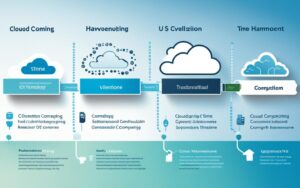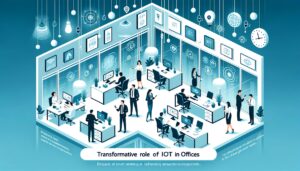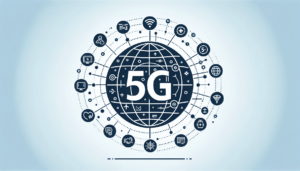Table of Contents
In the ever-evolving landscape of technology, Edge Computing stands as a pivotal innovation that is transforming the way data is processed, analyzed, and delivered. Moving beyond the limitations of traditional cloud computing, Edge Computing brings computation and data storage closer to the source of data generation, be it IoT devices, sensors, or end-users. This shift not only reduces latency but also enhances speed and reliability, offering a myriad of applications across various industries.
This comprehensive guide aims to provide an in-depth exploration of Edge Computing, from its underlying architecture to its real-world applications and benefits. Whether you’re a business leader seeking to optimize your operations or a technology enthusiast curious about the latest advancements, understanding the nuances of Edge Computing is essential for staying ahead in today’s fast-paced digital world.
So, let’s embark on this deep dive into Edge Computing and explore its transformative potential in shaping the future of data processing and analytics.
The Fundamentals of Edge Computing: Architecture and Components
As we delve deeper into the intricacies of Edge Computing, it becomes increasingly important to understand its foundational architecture and the key components that distinguish it from traditional cloud-based or centralized computing models.
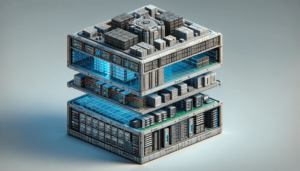
Architecture
The architecture of Edge Computing is ingeniously designed to decentralize data processing. Unlike traditional models where all data is sent to a central hub for processing, Edge Computing distributes the computational load across multiple nodes. These nodes are strategically located closer to the data source, which could range from a local data center to individual devices like smartphones, industrial machines, or IoT sensors. This proximity to the data source significantly reduces latency and enhances data processing speed, making real-time analytics and decision-making feasible.
Types of Edge Computing Architecture
- Device Edge: In this setup, the devices themselves, such as IoT sensors or smartphones, have built-in computational capabilities to process data locally.
- Local Edge: Here, a localized edge server or data center is used for initial data processing. This is common in industrial setups where multiple devices need to be managed.
- Regional Edge: In larger setups, a regional data center may be used to aggregate and process data from multiple local edges. This is often seen in smart city implementations.
Components
Edge Nodes
These are the hardware components strategically located at the edge of the network. They are responsible for the initial data processing and can vary in complexity. Edge nodes can be as simple as a temperature sensor in a smart home system or as complex as a high-powered computer in an industrial setting.
Edge Server
The edge server acts as an intermediary, aggregating data from multiple edge nodes for further processing. It has more computational power and storage capabilities compared to edge nodes. The edge server performs more complex tasks like data filtering, analytics, and temporary storage before sending it to the central data center or cloud.
Data Center
While the essence of Edge Computing is to minimize the reliance on centralized data centers, these centers still play a crucial role, especially for long-term data storage, backup, and complex data analytics tasks that require substantial computational power.
Network Connectivity
High-speed network connections, often facilitated by technologies like 5G, are essential for the seamless transmission of data between the edge nodes, edge servers, and centralized data centers. The quality of network connectivity can significantly impact the efficiency and effectiveness of an Edge Computing setup.
By diving into these fundamental aspects, both businesses and tech enthusiasts can gain a comprehensive understanding of Edge Computing. This knowledge is crucial for making informed decisions about its implementation, scalability, and long-term maintenance.
Applications and Use Cases: How Edge Computing is Making an Impact
As we continue to explore the realm of Edge Computing, it’s essential to delve into its practical applications and use cases. The technology is not just a theoretical concept but a practical solution that is already making waves across various industries.
IoT and Smart Devices
One of the most prominent applications of Edge Computing is in the Internet of Things (IoT). With the proliferation of smart devices, from home appliances to industrial sensors, Edge Computing allows for real-time data processing and decision-making right at the source.
Healthcare
In healthcare, Edge Computing can facilitate remote monitoring and telemedicine, providing real-time data that can be crucial for patient care. It also enables wearable devices to process health metrics locally, ensuring quicker response times in emergencies.
Retail and Customer Experience
In the retail sector, Edge Computing can enhance customer experience by providing personalized recommendations and targeted advertising based on real-time analytics.
Automotive Industry
Self-driving cars are another area where Edge Computing shines. The technology allows for real-time processing of data from various sensors, enabling quick decision-making that is crucial for autonomous driving.
Industrial Automation
In industrial settings, Edge Computing can monitor machinery and equipment in real-time, predicting maintenance needs and preventing downtime.

For a more comprehensive understanding of how Edge Computing is revolutionizing data processing, you can refer to this insightful article by NTT. It elaborates on the importance of Edge Computing in enabling devices and sensors to process and analyze data in real-time, thereby enhancing efficiency and effectiveness across various sectors.
By understanding these applications and use cases, it becomes evident that Edge Computing is not just a technological advancement but a practical solution that addresses real-world challenges.
Challenges and Solutions:
While Edge Computing offers a plethora of benefits, it’s not without its challenges. From security concerns to data management, businesses and organizations must navigate various complexities to successfully implement and maintain an Edge Computing infrastructure.
Security Concerns
One of the most pressing challenges is ensuring the security of data as it’s processed at the edge. Unlike centralized data centers, which have robust security protocols, edge nodes are often more vulnerable to attacks.
Data Management
Managing data effectively across a decentralized network can be complex. Ensuring data integrity, consistency, and availability across various edge nodes and servers is crucial for the system’s overall reliability.
Cost and Scalability
Initial setup costs for Edge Computing can be high, especially for small businesses. Additionally, as the system scales, managing a growing number of edge nodes and servers can become increasingly complex and costly.
Interoperability
With a variety of devices and platforms involved, ensuring interoperability can be challenging. Standard protocols and interfaces are essential for seamless communication between different components of the Edge Computing system.
Latency and Bandwidth
While Edge Computing aims to reduce latency, network issues can still impact performance. Ensuring sufficient bandwidth and low latency is crucial for applications that require real-time data processing.
By understanding these challenges and actively seeking solutions, businesses can more effectively leverage the benefits of Edge Computing while mitigating its complexities. Whether it’s implementing advanced security measures or optimizing data management protocols, proactive planning and execution are key to successfully navigating the challenges of Edge Computing.
Adoption Strategies: Navigating the New Technological Landscape
As we explore the future of data processing, it’s crucial to consider how businesses and organizations can effectively adopt these emerging technologies. While the focus has been on specific advancements, the broader landscape of technological innovation offers a myriad of opportunities and challenges.
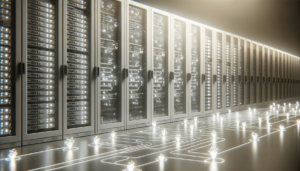
Risk Assessment
Before diving into any new technology, conducting a thorough risk assessment is essential. This involves evaluating the potential benefits against the costs and challenges, such as security vulnerabilities and implementation complexities.
Pilot Programs
Before a full-scale rollout, running pilot programs can provide invaluable insights into the effectiveness and limitations of new technologies. These trials can help organizations make data-driven decisions and fine-tune their strategies.
Collaboration and Partnerships
Often, the complexity of new technologies requires specialized expertise. Forming partnerships with tech companies or hiring consultants can provide the necessary knowledge and skills to successfully implement new solutions.
Regulatory Compliance
New technologies often come with a new set of regulations and compliance requirements. Staying updated on these and integrating them into your adoption strategy is crucial for legal and operational reasons.
Scalability Planning
As your organization grows, so will your technological needs. Planning for scalability from the outset can save time and resources in the long run, making it easier to adapt as circumstances change.
By taking a strategic approach to the adoption of new technologies, businesses can not only stay competitive but also operate more efficiently and effectively in an ever-changing digital landscape.
Conclusion: Navigating the Future Landscape of Data Processing
As we conclude this comprehensive guide, it’s evident that the technological landscape is undergoing a seismic shift, offering unprecedented opportunities for innovation and growth. While Edge Computing stands as a significant pillar in this transformation, it’s part of a broader ecosystem of advancements that are collectively reshaping how data is processed, analyzed, and utilized.
The challenges are real, but so are the opportunities. By understanding the architecture, applications, and complexities of these emerging technologies, and by strategically planning for their adoption, businesses and organizations can position themselves for long-term success in an increasingly digital world.
Thank you for joining us on this journey through the evolving world of data processing. We hope this guide serves as a valuable resource for decision-makers, tech enthusiasts, and anyone interested in understanding the future of technology and its impact on data processing.





